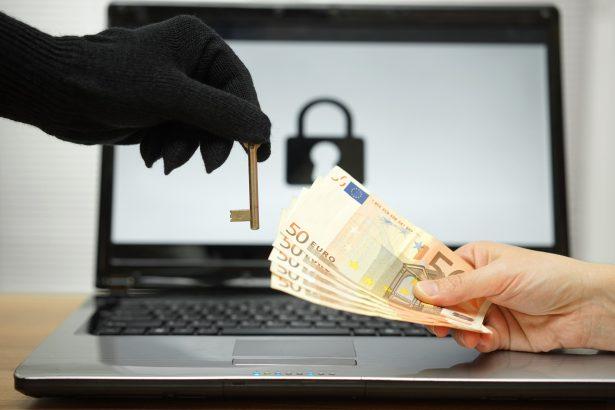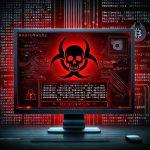The RedLocker Virus is a dangerous type of ransomware that encrypts your files and demands a hefty ransom in exchange for their release. Disguised within seemingly harmless files or attachments, this malware often infiltrates systems through phishing emails or pirated software downloads. Once inside, it causes immediate damage—locking your data, altering system settings, and leaving a threatening ransom message as your desktop wallpaper.
This cryptovirus targets specific file types and modifies their names by appending the .redlocker extension. Victims soon find that they can no longer access personal photos, work documents, databases, or other important files. Unfortunately, paying the ransom doesn’t guarantee data recovery. The only assured route is to remove the malware entirely and attempt safe recovery using professional tools.
RedLocker Virus Summary Table
| Category | Details |
|---|---|
| Threat Name | RedLocker Virus |
| Threat Type | Ransomware, Cryptovirus |
| Encrypted File Extension | .redlocker |
| Ransom Note File | Message set as desktop wallpaper |
| Ransom Amount | $500 in Bitcoin |
| BTC Address | 19DpJAWr6NCVT2oAnWieozQPsRK7Bj83r4 |
| Symptoms | Files become inaccessible, new file extension added, ransom wallpaper shown |
| Known Distribution | Malicious email attachments, pirated software, fake websites |
| Damage | Permanent file encryption, possible data theft, malware installation |
| Danger Level | Extremely High |
| Registry Changes | Yes, persistence via registry modifications |
| Targeted Folders | %Local%, %Temp%, %Windows%, %AppData%, %System32%, etc. |
| Detection Names | May vary: “Ransom:Win32/RedLocker”, “Trojan.Ransom.RedLocker”, etc. |
| Associated Emails | Not publicly disclosed |
What Does RedLocker Do?
Once activated, the RedLocker Virus begins encrypting data using a strong algorithm. It can even exfiltrate sensitive data before encryption, connecting to a remote hacker-controlled server. As part of its stealth tactics, it embeds itself into system directories such as:
%Local%%Temp%%Windows%%AppData%%System32%
It also manipulates the Windows Registry to ensure it starts every time you boot your PC. In most cases, victims don’t notice the infection until it’s too late and their desktop background displays the following ransom message:
Ransom Note Text Displayed by RedLocker:
WOOPS, YOUR FILES HAVE BEEN ENCRYPTED!
Your important files have been encrypted by a sophisticated ransomware.
You will not be able to access your files, until they will be decrypted.
Do not waste your time by searching for a decryptor, this will not help you.
CAN I RECOVER MY FILES?
Sure, we promise that you will be able to recover all of your files safely.
But if you want to decrypt your files, you need to pay.
You only have 24 hours to submit the payment, otherwise the price will be doubled.
HOW DO I PAY?
You will be able to pay only in bitcoin, for anonymous reasons.
If you don’t know how to buy bitcoins, you can check it using our menu.
PAYMENT INFOS
BTC Address: 19DpJAWr6NCVT2oAnWieozQPsRK7Bj83r4
AMOUNT TO SEND: $500.000
WARNING\n1. DO NOT REMOVE THE ‘.redlocker’ EXTENSION TO THE FILES, IT WILL CORRUPT THEM.\n2. DO NOT TRY TO USE FREE DECRYPTORS ONLINE, YOU WILL CORRUPT YOUR FILES.
PRESS ANY KEY TO GO TO THE MENUHackers behind RedLocker sometimes decrypt a few small files under 5MB to “prove” they have control over your data. This trick is used to pressure victims into paying the ransom.
Manual Ransomware Removal Process
Important: Manual removal is recommended only for experienced users, as incorrect actions can lead to data loss or incomplete removal of the ransomware. If unsure, consider the SpyHunter Removal Method for a guided, automated solution.
Step 1: Disconnect from the Internet
- Immediately disable Wi-Fi or unplug the Ethernet cable to prevent the ransomware from communicating with remote servers.
- This can prevent additional encryption or further infections.
Step 2: Boot into Safe Mode
For Windows Users
- Windows 10/11:
- Press Windows + R, type
msconfig, and press Enter. - Under the Boot tab, select Safe boot and check Network.
- Click Apply, then OK, and restart your PC.
- Press Windows + R, type
- Windows 7/8:
- Restart your PC and press F8 repeatedly before Windows starts.
- Select Safe Mode with Networking and press Enter.
For Mac Users
- Restart your Mac and hold the Shift key immediately after the startup chime.
- Release the key when the Apple logo appears.
- Your Mac will boot in Safe Mode.
Step 3: Identify and Terminate Malicious Processes
Windows
- Open Task Manager by pressing Ctrl + Shift + Esc.
- Look for unusual processes consuming high CPU or memory.
- Right-click on the suspicious process and select End Task.
Mac
- Open Activity Monitor (Finder > Applications > Utilities > Activity Monitor).
- Look for unknown or high-resource-consuming processes.
- Select the suspicious process and click Force Quit.
Step 4: Delete Ransomware Files
Windows
- Open File Explorer and navigate to:
C:\Users\[Your Username]\AppData\LocalC:\Users\[Your Username]\AppData\RoamingC:\Windows\System32
- Identify and delete suspicious files (randomly named or recently modified items).
- Clear temporary files:
- Press Windows + R, type
%temp%, and hit Enter. - Delete all files in the Temp folder.
- Press Windows + R, type
Mac
- Open Finder and select Go > Go to Folder.
- Type
~/Library/Application Supportand check for unfamiliar files or folders. - Remove unknown
.plistfiles from~/Library/LaunchAgents.
Step 5: Remove Ransomware Entries from Registry or System Settings
Windows
- Press Windows + R, type
regedit, and hit Enter. - Navigate to:
HKEY_CURRENT_USER\SoftwareHKEY_LOCAL_MACHINE\Software
- Identify and delete ransomware-related registry entries.
Mac
- Open System Preferences > Users & Groups.
- Select the Login Items tab and remove any unknown startup programs.
- Check
~/Library/Preferencesfor malicious settings.
Step 6: Restore System Using a Backup or Restore Point
Windows
- Press Windows + R, type
rstrui, and press Enter. - Choose a restore point from before the infection and proceed.
Mac
- Restart your Mac and enter macOS Utilities by holding Command + R.
- Select Restore from Time Machine Backup and restore a safe backup.
Step 7: Attempt to Decrypt Files
- Check No More Ransom (www.nomoreransom.org) for available decryption tools.
- If unavailable, restore files from backups.
Automated Ransomware Removal with SpyHunter
If manual removal is too complex or risky, SpyHunter offers a safer, automated method for detecting and removing ransomware.
Step 1: Download SpyHunter
- Get SpyHunter from the official Enigma Software website.
Step 2: Install SpyHunter
- Open the downloaded file (
SpyHunter-Installer.exeor.dmgfor Mac users). - Follow the installation prompts.
- Launch SpyHunter upon completion.
Step 3: Run a Full System Scan
- Click Start Scan Now to detect malware and ransomware.
- Wait for the scan to complete and review detected threats.
Step 4: Remove Detected Ransomware
- Click Fix Threats to remove identified ransomware components.
- SpyHunter will clean your system automatically.
Step 5: SpyHunter’s Custom Malware HelpDesk
- If ransomware persists, use SpyHunter’s Malware HelpDesk for custom malware fixes.
Step 6: Restore Files
- Use backups stored on external drives or cloud storage.
- If no backup is available, check No More Ransom for decryption tools.
Preventing Future Ransomware Attacks
- Keep backups: Use cloud storage or an external hard drive.
- Install a reliable security tool: SpyHunter offers real-time protection against malware.
- Enable Windows Defender or Mac security features for additional protection.
- Avoid phishing emails and unknown attachments.
- Regularly update Windows, macOS, and installed applications.




